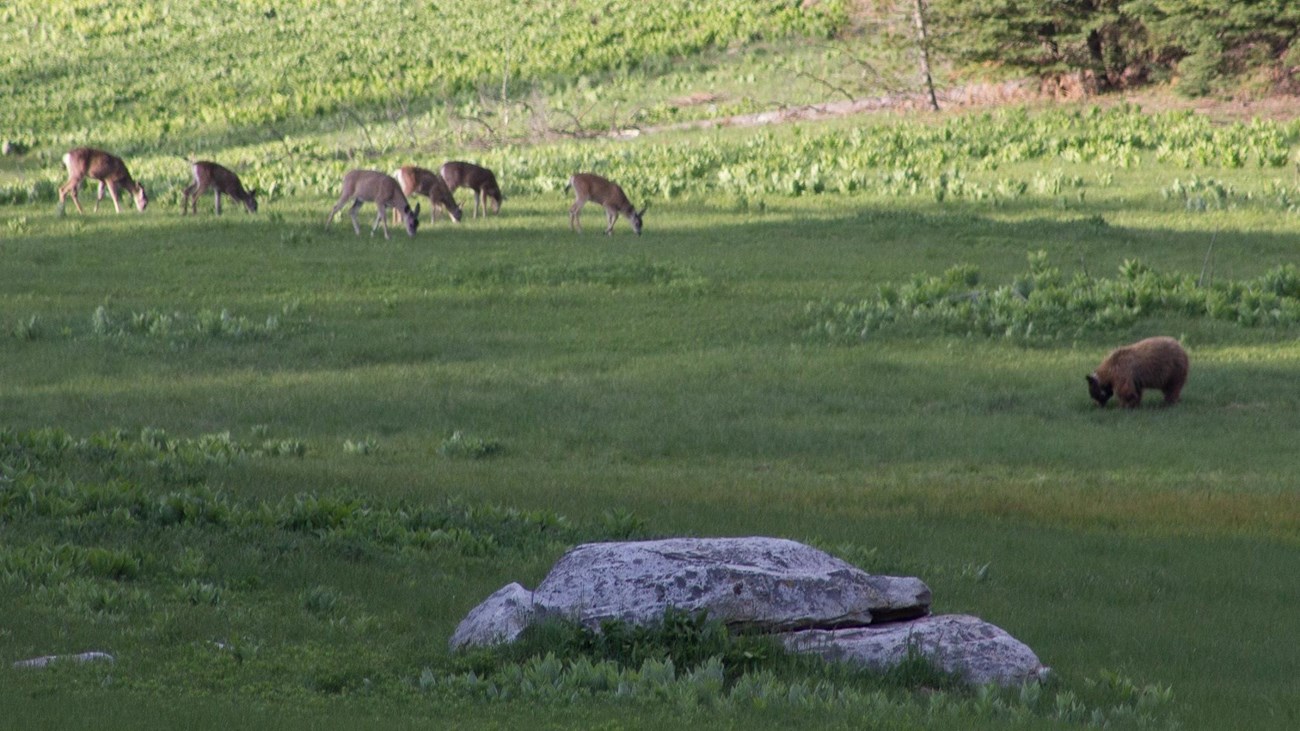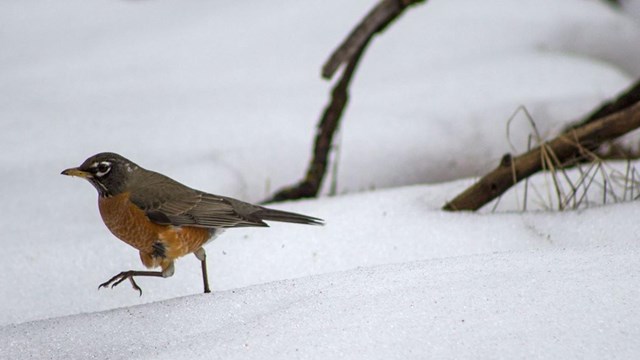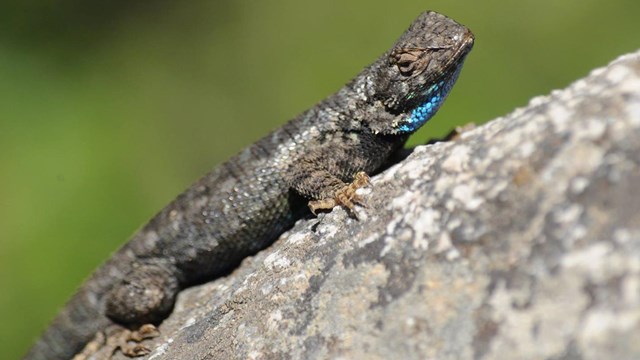
Mammals
Yosemite's approximately 90 mammal species, and their behaviors, are truly fascinating to observe safely and responsibly. 
Amphibians
Yosemite is home to a small variety of amphibians; eleven native and one-non-native species can be found here. 
Birds
Calling all bird enthusiasts! An astounding 262 species of birds have been documented in Yosemite. 
Reptiles
Yosemite contains a high diversity of reptiles; you can find 22 species, including one turtle, seven lizards, one skink and 13 snakes here. 
Fish
Native fish are only found in the lower elevations of Yosemite. Non-native fish (primarily trout) have been introduced throughout the park. 
Insects, Spiders, Centipedes, Millepedes
From a bug’s eye view, Yosemite is a good home for creeping, crawling, buzzing creatures to live, breed, and feed. Diverse Habitats and a Diversity of Species
In Yosemite Valley, you'll find species that depend upon meadow habitat. Predators, in turn, are attracted to these areas. The interface between meadow and forest is also favored by many animal species because of the proximity of open areas for foraging, and cover for protection. Overall, the park's widespread coniferous forests—with a relatively mild climate and a mixture of plant species—provide a lush habitat for animals to live. At higher elevations, fewer wildlife species tend to be found due, in part, to the lower complexity of the forest. Above treeline, the climate becomes harsh with a short growing season. Despite the richness of high-quality habitats in Yosemite, approximately 40 species have a special status under California endangered species legislation. Three species—grizzly bear, California red-legged frog, and foothill yellow-legged frog—are believed to be extirpated in the park within recent history. Serious threats to Yosemite's wildlife and the ecosystems they occupy include loss of a natural fire regime, non-native species, air pollution, habitat fragmentation, and climate change. On a more local basis, factors such as the availability of human food and occurrence of roadkills negatively affect wildlife species. “In final analysis, no two species well established in a region occupy precisely the same ecologic space; each has its own peculiar places for foraging, and for securing safety for itself and for its eggs or young. These ultimate units of occurrence are called ‘ecologic niches.’” – Joseph Grinnell and Tracy Irwin Storer, Animal Life in the Yosemite, University of California Press, 1924 |
Last updated: November 17, 2025
